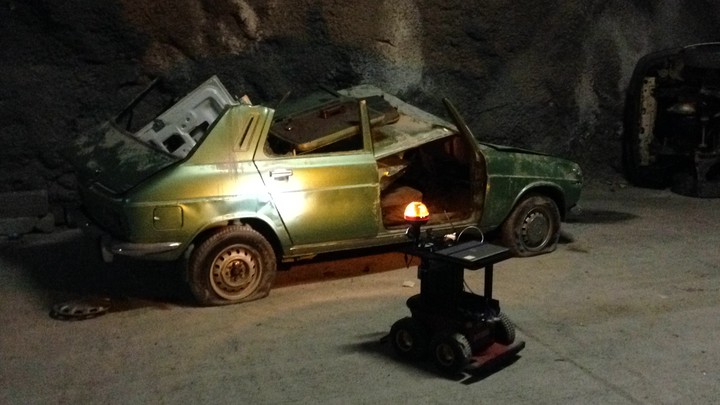Robochallenge

Robochallenge addresses theoretical and experimental research in the field of intervention and exploration of challenging environments by means of aerial and ground robots. A challenging environment is one where, due to different reasons, current robotic techniques fail or do not work properly and continuously. This failure is due to the characteristics of the environment, such as lack of coverage GNSS (any environment confined), absence of visual or geometric discriminant characteristics (tunnels, pipes), environments with sections of different characteristics (tunnel construction, mine), complex patterns of communication signal propagation (side galleries, caves), dynamic environments (presence of workers or other vehicles), absence of quality in lighting (tunnel construction, mine, pipeline, cave), or large (any real environment). There are a number of these environments that are normally confined (not available GNSS location and patterns of signal propagation are different from the free space) where there is interest in the application of robotics. The proposal presents a novel conductive thread in the current state of the art: the use of the communication signal at the location, navigation and deployment of robots in such challenging environments. In addition to ensuring the integrity in the robot communication, using the communication signal as an additional sensor integrated with the rest (inertial, range, RGBD), will provide a better localization, navigation and deployment. This will also require the study of the propagation of the communication signal in this type of environment for the development of propagation models and maps of communications. Experimental environments considered are confined and structured (tunnels, galleries), unstructured (tunnels under construction, underground areas in buildings), or no structured (caves, underground with landslides). Realistic demonstrators will be developed to evaluate the applicability of the techniques developed in these environments: chemical threat in a chemical road tunnel, transport of debris in a tunnel under construction, navigation in a confined environment with persons/workers moving around, monitoring of environmental parameters in a cave. In the project will work with terrestrial robots (UGVs) in environments that can be considered 2D or 2.5D (tunnels, galleries, mines), and using aerial robots (UAVs) in non-navigable terrains for UGVs (caves, underground with landslides). The deployment of heterogeneous teams (UGVs and UAVs) with different task assignments will be also addressed. Laser rangefinder scanners, RGBD sensors, and commercial communication modules will be used. The adaptive integration of the information from these sensors will allow the environment understanding for the robot localization and navigation during the whole mission.